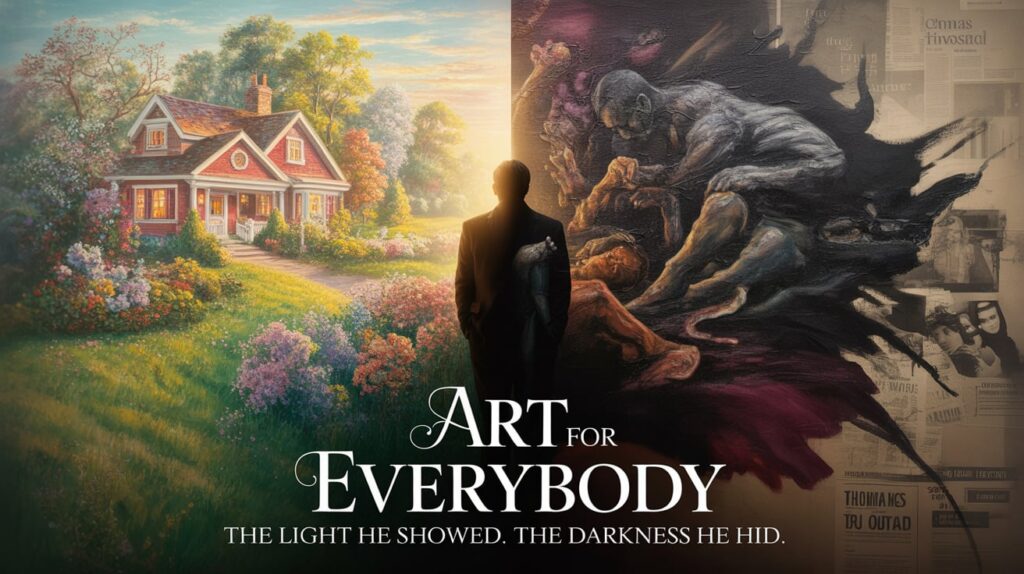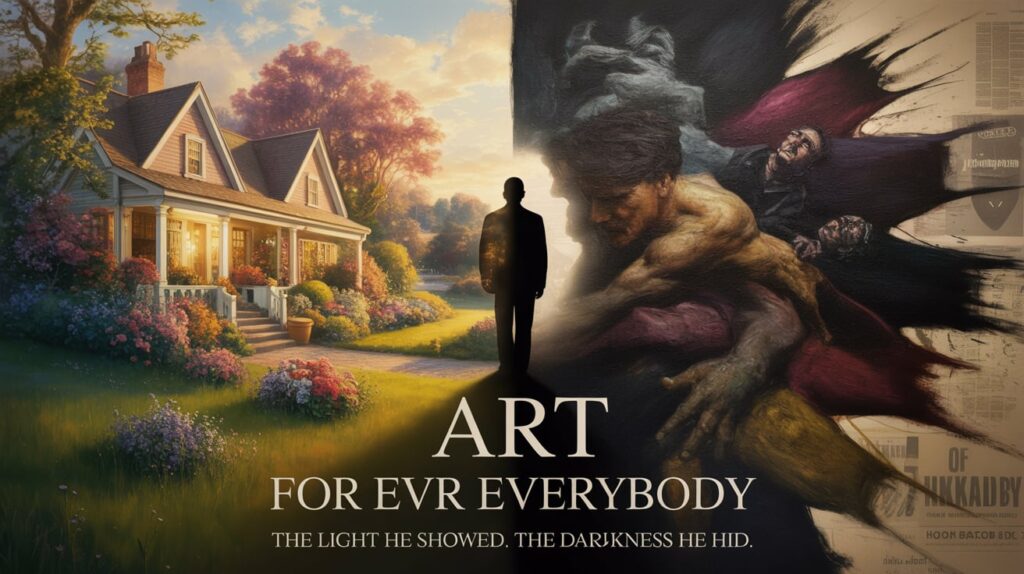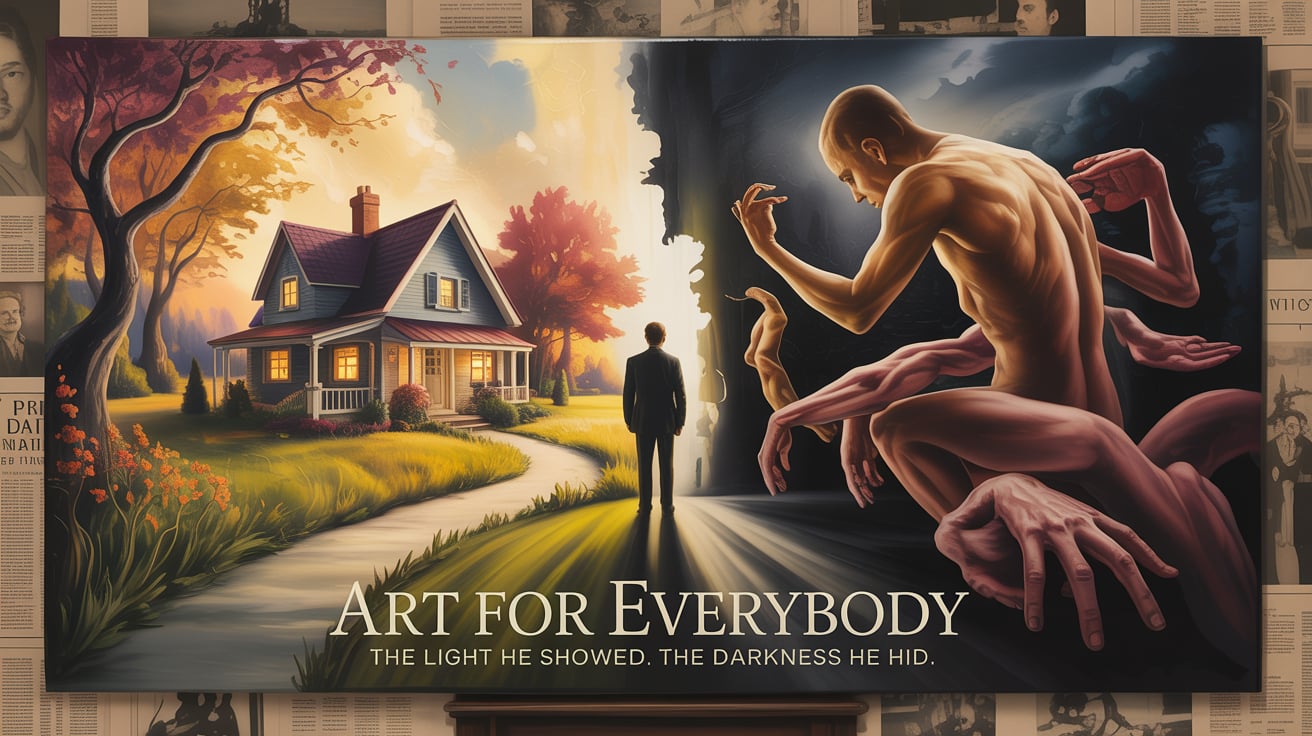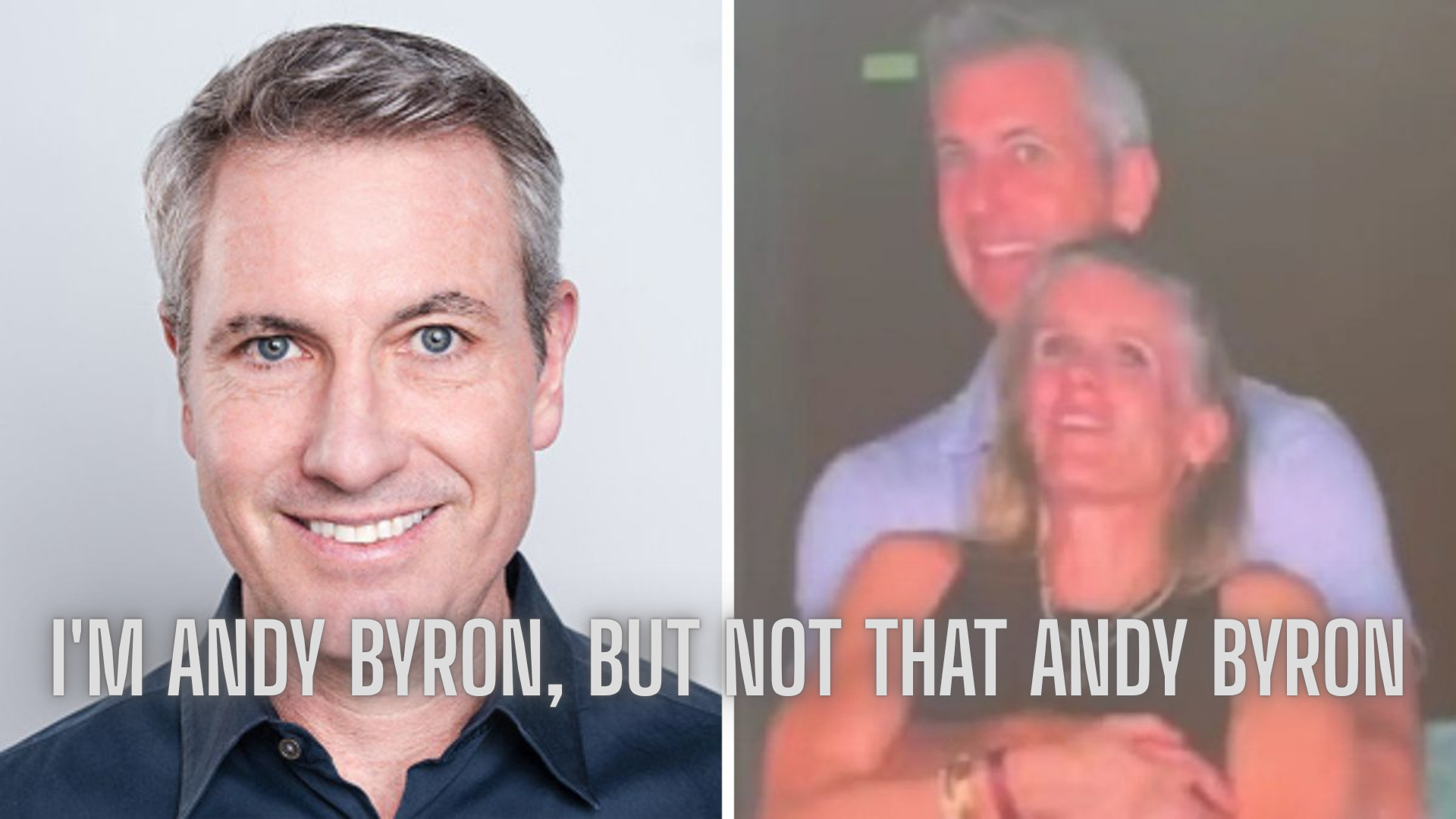You won’t find Thomas Kinkade’s work hanging in the halls of the Museum of Modern Art, but that didn’t stop him from becoming one of the most commercially successful artists in history. Known as the self-proclaimed “Painter of Light,” Kinkade’s work graces tens of millions of American homes—his cozy cottages, glowing gazebos, and nostalgic landscapes have long offered viewers a comforting window into a rose-tinted, pastoral past. But as Miranda Yousef’s compelling documentary Art for Everybody reveals, there was a far more complicated figure behind the golden light.
Kinkade’s paintings, with their soft brushwork and glowing highlights, sold in droves throughout the 1980s and 1990s. While he was often dismissed or ignored by the traditional art world, Kinkade found his audience elsewhere—on home-shopping networks, through mall franchises, and via a growing empire of merchandise. His name became synonymous with a particular vision of American values—family, faith, patriotism—and his art appeared on everything from calendars and mugs to collectible plates and nightlights. At its peak, the Kinkade brand pulled in over $100 million a year.

But Yousef’s documentary is far from a celebration of that success. Instead, it’s a layered and introspective exploration of the man behind the brand—his contradictions, his demons, and the deeper truths he kept hidden from public view. Drawing on a wealth of interviews with Kinkade’s family, friends, collaborators, and critics, as well as the artist’s own words, the film offers a nuanced portrait of someone who walked a tightrope between mass appeal and personal torment.
Kinkade always claimed his art was “for everybody,” and in many ways, it was. But as Art for Everybody makes clear, it wasn’t exactly universal. His idealized imagery resonated most deeply with a specific demographic: white, conservative, and often Christian Americans longing for a simpler, more harmonious past—real or imagined. In this sense, his art functioned not only as aesthetic comfort food but also as a subtle cultural statement. Though Yousef’s film touches on this ideological dimension, it could benefit from a deeper dive into how Kinkade’s work both reflected and reinforced a particular political and social worldview. Comparisons to the provocative work of contemporaries like Robert Mapplethorpe are made briefly but not fully explored, leaving open an opportunity for a broader discussion about the role of art in cultural identity and conflict.
Still, the film’s most powerful moments come from its access to Kinkade’s unpublished archive—a collection of private, never-before-seen paintings that starkly contrast the saccharine sweetness of his commercial work. These secret pieces are steeped in shadow and anguish. Rendered in dark tones of burgundy, brown, and black, they feature anguished figures, foreboding skies, and emotionally raw imagery. It’s as if Kinkade was pouring his inner turmoil—his battles with alcoholism, depression, and the crushing pressure of fame—onto these hidden canvases.

These works were kept locked away during his lifetime, never intended for public consumption. But in revealing them, Art for Everybody offers viewers a rare window into the duality of Kinkade’s life—the sunny, idealized world he presented to the public, and the much more painful and complex reality he lived in private. The contrast is striking, almost jarring, and forces viewers to confront the question: Can an artist known for wholesomeness also be someone who was deeply broken?
In the end, Art for Everybody is more than just a documentary about a famous painter—it’s a meditation on authenticity, contradiction, and the fine line between commercial art and personal expression. Kinkade remains a polarizing figure, revered by millions and reviled by many in the art establishment. But Yousef resists easy categorization, choosing instead to let the man’s own work—both public and private—tell the story. And what emerges is not simply the tale of a man who painted light, but of one who lived in darkness.
Conclusion
Art for Everybody peels back the glossy surface of Thomas Kinkade’s carefully curated public image to reveal a far more intricate—and often troubling—portrait of the man behind the paintings. By juxtaposing his mass-marketed visions of tranquility with the haunting private works hidden from view, the film invites audiences to reconsider what lies beneath artistic success and the true cost of becoming a cultural icon. In the end, Miranda Yousef’s documentary doesn’t just illuminate Kinkade’s contradictions—it challenges us to question the very meaning of light and darkness in both art and life.
Art for Everybody opens at Bertha DocHouse, London, on 13 June.




2 thoughts on “Art for Everybody” Review – Shedding Light on the Shadows Behind Thomas Kinkade’s Sunny Canvas”